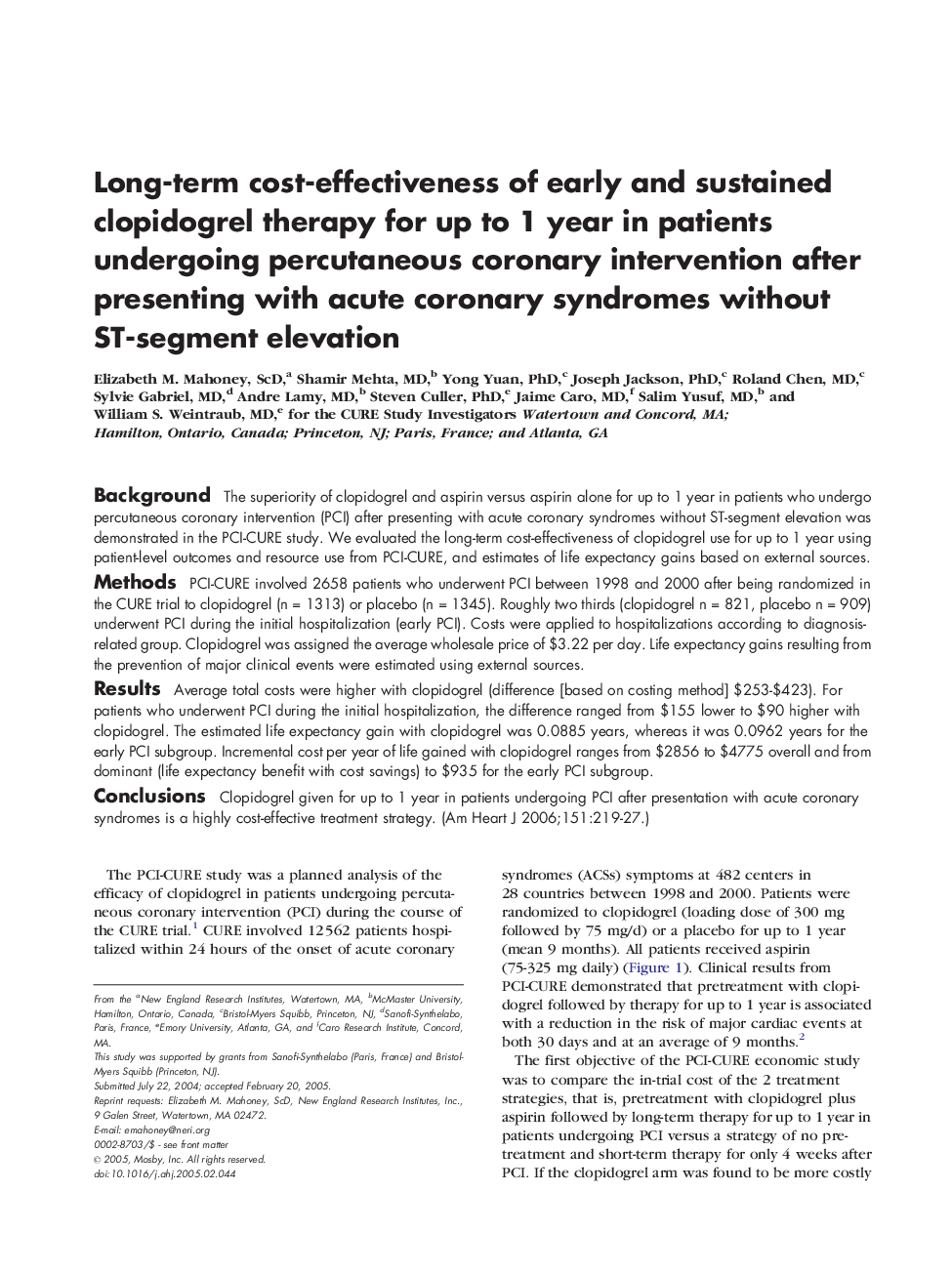| Article ID | Journal | Published Year | Pages | File Type |
|---|---|---|---|---|
| 2851448 | American Heart Journal | 2006 | 9 Pages |
BackgroundThe superiority of clopidogrel and aspirin versus aspirin alone for up to 1 year in patients who undergo percutaneous coronary intervention (PCI) after presenting with acute coronary syndromes without ST-segment elevation was demonstrated in the PCI-CURE study. We evaluated the long-term cost-effectiveness of clopidogrel use for up to 1 year using patient-level outcomes and resource use from PCI-CURE, and estimates of life expectancy gains based on external sources.MethodsPCI-CURE involved 2658 patients who underwent PCI between 1998 and 2000 after being randomized in the CURE trial to clopidogrel (n = 1313) or placebo (n = 1345). Roughly two thirds (clopidogrel n = 821, placebo n = 909) underwent PCI during the initial hospitalization (early PCI). Costs were applied to hospitalizations according to diagnosis-related group. Clopidogrel was assigned the average wholesale price of $3.22 per day. Life expectancy gains resulting from the prevention of major clinical events were estimated using external sources.ResultsAverage total costs were higher with clopidogrel (difference [based on costing method] $253-$423). For patients who underwent PCI during the initial hospitalization, the difference ranged from $155 lower to $90 higher with clopidogrel. The estimated life expectancy gain with clopidogrel was 0.0885 years, whereas it was 0.0962 years for the early PCI subgroup. Incremental cost per year of life gained with clopidogrel ranges from $2856 to $4775 overall and from dominant (life expectancy benefit with cost savings) to $935 for the early PCI subgroup.ConclusionsClopidogrel given for up to 1 year in patients undergoing PCI after presentation with acute coronary syndromes is a highly cost-effective treatment strategy.
